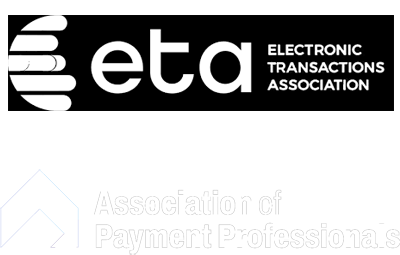20 Aug

Cash discounts play a crucial role in business, providing opportunities for companies to improve their cash flow, engage customers, and manage inventory effectively. In this article, we will delve deeper into the world of cash discounts, exploring their definitions, types, real-world examples, and the benefits they offer to businesses.
Understanding Cash Discounts
Definition of Cash Discounts
A cash discount refers to a reduction in the purchase price of goods or services when paid for with cash within a specified period. It’s a common practice used by businesses to incentivize customers to pay promptly, thus improving their own liquidity.
The Importance of Cash Discounts in Business
Cash discounts hold significant importance for businesses, as they offer several advantages in day-to-day operations. These discounts facilitate positive cash flow and help establish strong relationships with customers and suppliers.
When customers take advantage of cash discounts, businesses receive cash payments earlier, providing them with the necessary funds to meet immediate financial obligations or invest in growth opportunities. This improved cash flow enables companies to manage their operational expenses efficiently and reduce their reliance on expensive financing options.
Moreover, cash discounts not only benefit businesses but also contribute to the overall health of the economy. By encouraging prompt payment, cash discounts help stimulate economic activity by ensuring the circulation of money. This, in turn, supports other businesses and creates a positive ripple effect throughout the market.
Furthermore, cash discounts help foster customer loyalty and satisfaction. By offering incentives for prompt payment, businesses demonstrate their commitment to customer service and build trust with their clientele. This can lead to repeat business, as customers appreciate the financial benefits received through discounted prices.
In addition to customer loyalty, cash discounts also promote strong relationships with suppliers. When businesses consistently pay their suppliers promptly, it establishes a reputation for reliability and trustworthiness. Suppliers are more likely to prioritize these businesses, providing them with better terms, discounts, or exclusive offers. This mutually beneficial relationship can contribute to long-term growth and success.
It is important to note that cash discounts are not only applicable to retail transactions but can also be utilized in business-to-business (B2B) transactions. In the B2B context, cash discounts play a crucial role in maintaining healthy cash flow between companies. They encourage timely payments, reducing the risk of late or non-payment, and ensuring smooth operations throughout the supply chain.
Overall, cash discounts are a valuable tool for businesses, offering financial benefits, fostering customer loyalty, and strengthening relationships with suppliers. By understanding and leveraging the power of cash discounts, businesses can optimize their cash flow, improve their liquidity, and create a competitive edge in the market.
Types of Cash Discounts
Cash discounts are a common strategy used by businesses to incentivize customers to make purchases. They can take various forms, each serving a specific purpose and targeting different customer segments. Let’s explore some of the most common types of cash discounts in more detail.
Trade Discounts
Trade discounts are commonly used in business-to-business transactions and involve providing discounts to wholesale or retail buyers based on pre-negotiated agreements. These discounts ensure that businesses in the supply chain can achieve competitive pricing, incentivizing larger orders and long-term partnerships. By offering trade discounts, sellers can attract more customers and secure a larger market share. On the other hand, buyers benefit from cost savings, allowing them to resell products at a competitive price or pass on the savings to end consumers. This type of discount creates a mutually beneficial relationship, fostering trust and loyalty between buyers and sellers.
Quantity Discounts
Quantity discounts, as the name implies, encourage customers to buy in larger quantities. Businesses may offer tiered discounts based on the volume of products purchased, providing an extra incentive for customers to increase their order size. This type of discount benefits both parties involved. For businesses, quantity discounts help move more inventory, increase sales revenue, and reduce storage costs. By purchasing in bulk, customers can take advantage of lower unit costs, resulting in significant savings. Whether it’s a wholesale buyer stocking up on merchandise or an individual customer taking advantage of a limited-time offer, quantity discounts are an effective way to boost sales and reward customer loyalty.
Seasonal Discounts
Seasonal discounts are temporary reductions in prices offered during specific times of the year. Businesses often use this type of cash discount to capitalize on high-demand periods, such as holidays or end-of-season sales. Seasonal discounts attract customers and increase sales volumes during these periods, enabling businesses to clear excess inventory or generate additional revenue. Customers, on the other hand, benefit from discounted prices and special promotions, making it an opportune time to make purchases. Seasonal discounts create a sense of urgency and excitement, driving customer engagement and boosting overall sales performance. Whether it’s a Black Friday sale or a summer clearance event, businesses strategically leverage seasonal discounts to maximize their profits and provide value to their customers.
As you can see, cash discounts play a crucial role in the world of business. They serve as powerful tools for attracting customers, increasing sales, and fostering long-term relationships. Whether it’s through trade discounts, quantity discounts, or seasonal discounts, businesses can utilize these strategies to stay competitive, drive growth, and create a win-win situation for both buyers and sellers.
Real-World Examples of Cash Discounts
Retail Industry Cash Discounts
In the retail industry, cash discounts are commonly offered to incentivize customers to make immediate payments. This practice has been effective in encouraging customers to pay in cash, as it provides them with a tangible benefit. For example, electronics stores may provide discounts when customers pay in cash for high-ticket items such as televisions or smartphones. These discounts not only encourage prompt payment but also reduce the processing fees associated with credit card transactions, benefiting both the retailer and the customer.
Furthermore, the cash discounts offered by retailers also serve as a way to promote financial responsibility among consumers. By offering discounts for cash payments, retailers are encouraging customers to spend within their means and avoid accumulating credit card debt. This approach promotes a healthier financial lifestyle and fosters a more sustainable consumer culture.
Wholesale Industry Cash Discounts
Wholesale businesses often provide cash discounts as a means of attracting customers and competing in the market. In the highly competitive wholesale industry, offering cash discounts can be a strategic move to differentiate oneself from competitors. For instance, a wholesale supplier of clothing may offer discounts to retailers who pay for their orders in cash within a specified timeframe.
These cash discounts not only incentivize prompt payment but also allow retailers to achieve better margins. By paying in cash, retailers can reduce their own costs and pass on the savings to their customers. This creates a win-win situation where both the wholesaler and the retailer benefit from the cash discount.
Moreover, cash discounts in the wholesale industry can also contribute to the stability of the supply chain. By encouraging cash payments, wholesalers can ensure a steady cash flow, which is essential for maintaining inventory levels and meeting customer demand. This stability in the supply chain ultimately benefits the entire industry and fosters a more efficient and reliable distribution network.
Service Industry Cash Discounts
Cash discounts are not limited to the retail and wholesale sectors; they can also be found in the service industry. In the service industry, where intangible services are provided, cash discounts can play a crucial role in encouraging prompt payment and maintaining a healthy cash flow.
For instance, professional service providers such as lawyers or consultants may offer incentives for clients who settle their invoices in cash. These discounts not only motivate clients to pay promptly but also help service providers maintain a healthy cash flow to support their operations effectively. In the service industry, where time is often billed, cash discounts can also serve as a way to reward clients for their efficiency in settling their bills, creating a positive and mutually beneficial relationship between service providers and clients.
Additionally, cash discounts in the service industry can also contribute to building trust and loyalty. By offering discounts for cash payments, service providers demonstrate their commitment to providing value and convenience to their clients. This can lead to long-term relationships and repeat business, as clients appreciate the financial incentives and the seamless payment experience that cash discounts provide.
Benefits of Offering Cash Discounts
Cash discounts are a valuable tool employed by businesses across various industries. By understanding the definitions, types, and real-world examples of cash discounts, companies can leverage them to enhance their cash flow, engage customers, and effectively manage their inventory levels. Offering cash discounts can provide businesses with a competitive edge while fostering customer loyalty and long-term success.
Increased Cash Flow
One of the significant benefits of offering cash discounts is an improved cash flow. By encouraging customers to make prompt payments, businesses can access funds faster, which can be crucial for meeting day-to-day expenses or pursuing growth opportunities. The increased cash flow provides businesses with greater financial stability and flexibility, reducing their reliance on external financing options.
Furthermore, with a steady cash flow, businesses can invest in research and development, expand their product lines, or upgrade their infrastructure. This allows them to stay ahead of the competition and adapt to changing market trends. In addition, having a healthy cash flow enables businesses to negotiate better terms with suppliers, ensuring a steady supply of raw materials or inventory.
Customer Retention and Loyalty
Cash discounts can help businesses build and retain a loyal customer base. By providing incentives for prompt payment, companies demonstrate their commitment to customer service and offer financial benefits to their clientele. This fosters trust and loyalty, encouraging customers to continue purchasing from the business and recommending it to others. Long-term customer relationships are crucial for sustainable business growth and profitability.
Moreover, offering cash discounts can also lead to positive word-of-mouth marketing. Satisfied customers who have experienced the benefits of cash discounts are more likely to share their positive experiences with friends, family, and colleagues. This can result in new customers and increased sales for the business, further enhancing its reputation and market presence.
Inventory Management
Cash discounts also play a vital role in inventory management. By offering discounts for larger order quantities or during seasonal sales, businesses can effectively manage and control their inventory levels. This not only reduces carrying costs but also minimizes the risk of obsolete or unsold inventory, allowing businesses to optimize their working capital and improve their profitability.
Furthermore, by strategically timing the availability of cash discounts, businesses can stimulate demand and encourage customers to make purchases during slower periods. This helps maintain a steady flow of sales and prevents inventory from piling up, ensuring a healthy turnover rate and maximizing profitability.
In summary, the benefits of offering cash discounts extend beyond the immediate financial impact. They contribute to the overall growth and success of a business by improving cash flow, fostering customer loyalty, and optimizing inventory management. By implementing a well-designed cash discount strategy, businesses can position themselves as industry leaders, attract new customers, and maintain a strong financial position in the market.





